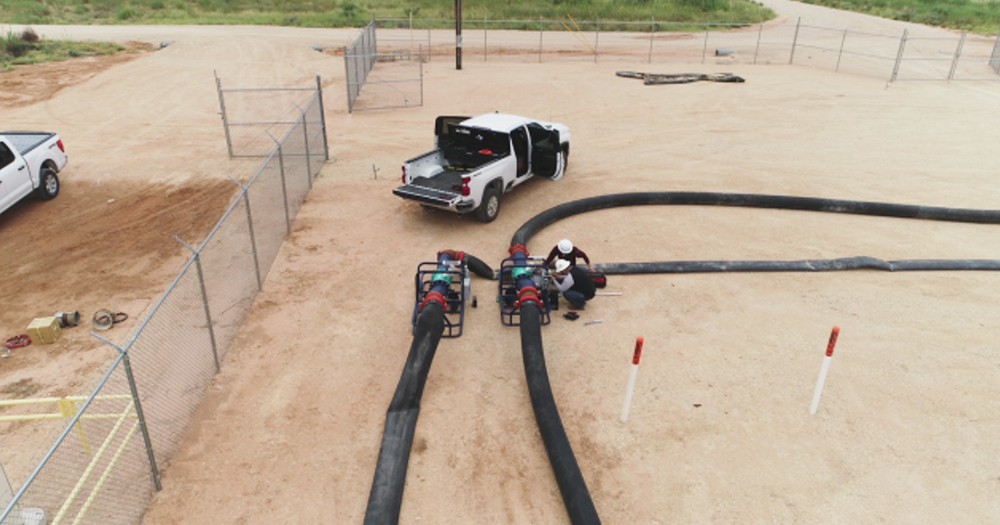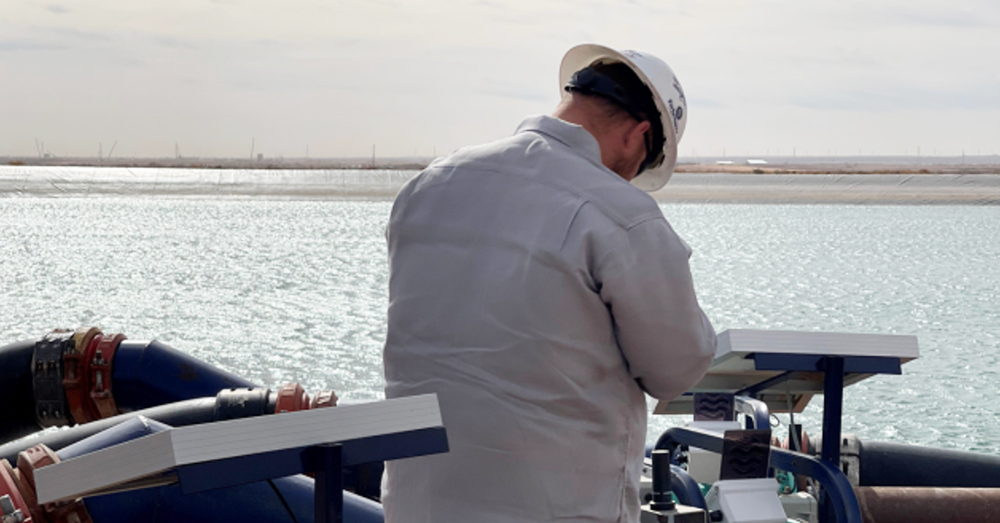August 2023, Vol. 250, No. 8
Features
Criteria to Consider in Selecting Water Transfer Flow Meters
By Tom Nobis, Industrial and Oil & Gas Vertical Market Manager, McCrometer
(P&GJ) — The oil and gas industry contains a complex number of flow applications, featuring a myriad of fluids and gases that challenge even the toughest of flow instrumentation. So, choosing the right flow meter for a water transfer application should be straightforward in comparison … right?
Despite the H2O flowing through the pipes, the decision-making process leading to the right flow meter can be less than crystal clear. To make the most informed decision about flow meter investments, it is important to take four criteria into consideration.
Consider ‘Where’
Not all geographic locations are equal when shopping for and specifying a flow meter. In the United States alone, there are a variety of shale gas plays across wildly diverse terrain. For a region such as the Marcellus Shale in the Northeast, engineers and operators often need a flow meter with a higher pressure rating to accommodate the elevation differences from water source to project location. In this region, it’s a frequent practice to use water transfer pipelines constructed of HTPE that require a 300 psi rated flow meter.
In a flatter landscape, such as the Permian Basin in Texas and New Mexico, it’s common to use lay-flat hose to transfer water from raw water or groundwater sources to storage ponds and tanks. In that region, there’s little elevation change, requiring less pipeline pressure, thus necessitating a lower psi flow meter.
In the frigid winters of the Bakken Basin, extreme temperatures demand a rugged meter that can withstand the harsh environment. Operators and engineers may end up enclosing pump equipment and flow meters to protect them from the elements and use heat-trace cabling to prevent freezing.
These practices can increase overall project costs, as an enclosed space necessitates Class 1, Division 1 or 2 rated equipment, and heat-trace cabling can be hazardous in enclosed locations. Operators and technicians should ensure their flow meter is accompanied by electronics that have the proper certifications to meet the needs of their project conditions.
In the U.S. South, meters may require an IP67 electrical enclosure rating to accommodate flooding issues or low water tables. This rating is essential in water transfer applications monitored by meters with transmitters or converters. If the meter fails to produce a reading, it can affect compliance with regulatory bodies, billing accuracy and other areas.
Consider Engineering
Meter technology is a major consideration, especially for operators and technicians who may be unfamiliar with certain technologies or unaware of new engineering advancements in tried-and-true solutions.
Mechanical meters are often the easiest to service in-field, but experience meter failure, clogging or erosion of internal mechanisms due to the raw and surface water being used in water transfer applications. While the meter itself is usually the most cost-effective, it’s not the most reliable for these kinds of flow projects.
When compliance and accurate billing are on the line, operators and technicians need to have peace-of-mind that their meter is durable enough to produce reliable flow readings.
Many oil and gas professionals are familiar with differential pressure (DP) technology, as it’s often a favored choice for crude oil, liquid natural gas and other harsh application measurement projects. The meters are highly accurate, offer a long lifespan, and are incredibly reliable. The price tag can be daunting for customers, however; the DP technology is often overkill for a water measurement application.
The winner in the overwhelming majority of water transfer applications is the rugged and robust electromagnetic (mag) flow meter, favored for its cost, durability and ease of operation.
Mag meters offer highly precise, repeatable flow readings that allow technicians and operators to meet regulatory requirements, while ensuring water transfer billing is accurate.
Mag meters often have an Achilles heel, however, in the form of a rubber liner or other adhesive covering to protect the meter body from corrosion and electronics water intrusion. These liners can potentially delaminate, tear or collapse, fouling the meter and nullifying any measurements.
Choosing a mag meter with an epoxy liner that is guaranteed against delamination can avoid these issues and protect your meter investment.
It's important to note that for mag meter technology, which operates on the basis of Faraday’s Law of Electromagnetic Induction, proper grounding is needed to ensure accurate performance of the measurement device.
Grounding ensures a steady voltage in the flow needed by the meter’s electrodes to produce accurate readings. It is important to ensure flow meters are installed correctly, with grounding rings or rods to safeguard against faulty measurements.
End Connection Options
Flanged, grooved, beveled – there are many end connections available for water transfer meters. Higher psi-rated meters will often necessitate a flanged meter, whereas lay flat hose benefits from a grooved end or Victaulic fitting for quick installation and transport. Additionally, many flow meter manufacturers offer custom lay lengths, which is a major benefit for retrofit installations.
There’s no need to re-pipe or reconfigure a skid setup to accommodate a flow meter with a different footprint. Choosing a flow meter that accommodates the project’s end connection needs will streamline the entire installation process, a massive benefit for short-term water transfer projects that often install, uninstall and transport piping, pump equipment and measurement instrumentation.
Many meters, such as mechanical propeller meters and DP meters, offer a variety of end connections to meet project needs. Mag meters are often more limited due to the construction of the liner affixed to the meter body.
If selecting a mag meter, choosing one with an integrated epoxy liner opens up the possibility for grooved end or Victaulic fittings. Depending upon project needs, this may streamline the entire installation and operation of the meter and water transfer operation.
Power, Output Options
A flow meter is only as good as the data it provides! Choosing a flow meter with sophisticated electronics will streamline an entire water transfer operation. Output options such as Modbus, Pulse 4-20mA, Har, and others can connect your flow meters to overarching process management software.
Output options, telemetry unit, and dataloggers ensure the recording and transmission of highly valuable flow data, allowing operators and field technicians to make informed decisions about daily operations without manually reading flow meters.
Additionally, implementing multiple flow meters with sophisticated data output options can provide diagnostic services to water transfer operations, pinpointing leakage problems and equipment malfunction within the miles of piping.
Many water transfer operations are in remote areas or have unreliable power sources, making a mechanical or battery-powered flow meter a requirement. Consider choosing a battery-powered flow meter with a five-year guaranteed battery life, or even solar power as a backup to ensure consistent data recording for the life of your meter investment.
For certain geographic locations, such as the frosty North, battery power won’t last as long due to the freezing temperatures, so a powered flow meter may be a more reliable choice in that situation. Additionally, heat tracing cable cannot be used with battery powered flow meters, so that is a consideration to keep in mind when specifying a flow meter for that region.
High Standards
In many regions, water transfer companies are experiencing climbing costs for water acquisition and wastewater disposal. Operators are using more and more produced water to decrease reliance on water sources. It’s critical to implement flow measurement devices that provide highly accurate and reliable flow data, as even one percentage inaccuracy can affect an operator’s bottom line.
The difference between a high-performing flow meter producing valuable flow data and an unreliable flow meter with maintenance issues and minimal-to-no system integration can be non-compliance with state or federal regulations and thousands of dollars of profit margin.
The key to effective water management is to accurately measure it! Flow data, when used properly, can revolutionize water transfer operations. High standards for flow meter selection criteria will ensure that technicians and operators implement flow devices that produce the most value for the lifetime of the water transfer operation.







Comments